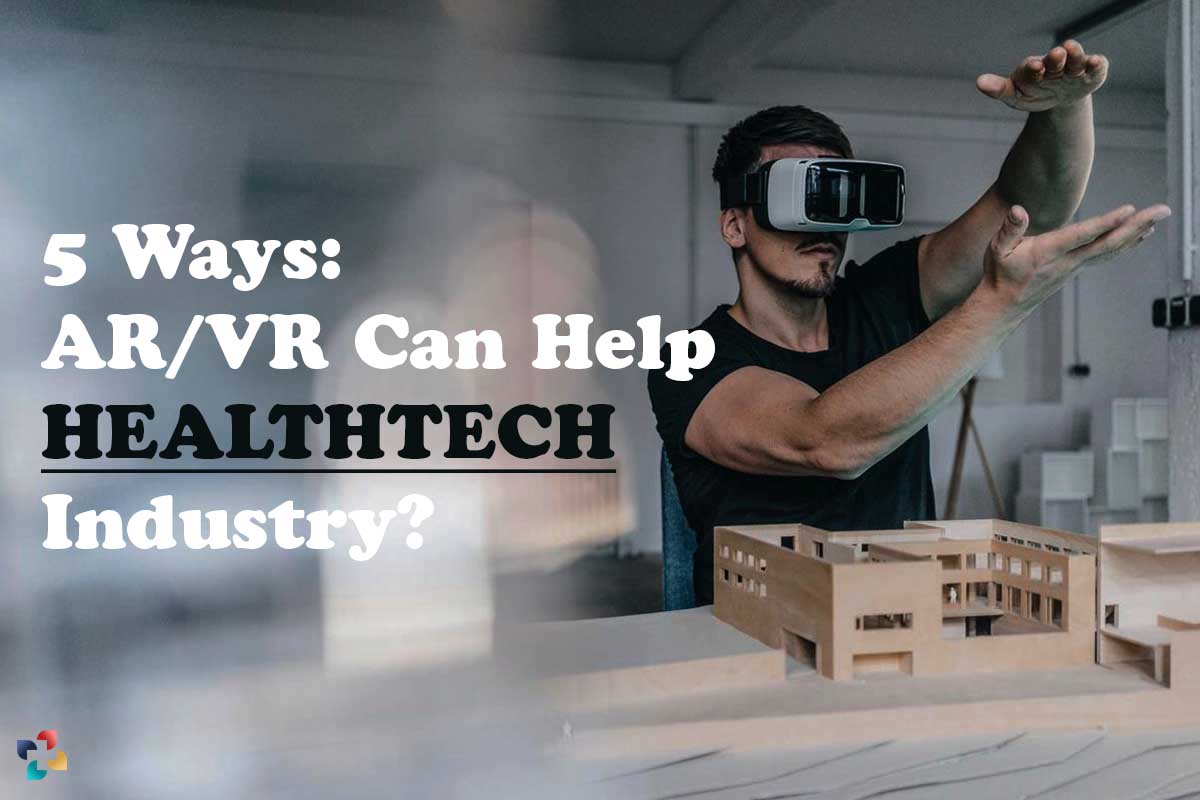The use of immersive technology is on the increase across a variety of industries, including the medical field, which has not been an exception. The use of augmented reality (AR) and virtual reality (VR) in the healthcare business is expected to reach US$5 billion by 2025, according to research published by Reportbuyer. This AR and VR in the health tech industry represent a compound annual growth rate of 36.6%. Have many Benefits of AR and VR in the HealthTech Industry.
The introduction of Benefits of AR and VR in the HealthTech Industry technologies such as Magic Leap and Microsoft HoloLens has thrown up the doors to a plethora of new options in the medical field. Extended Reality technology, sometimes known simply as XR technology, refers to immersive visual technologies that integrate virtual and actual surroundings.
Virtual reality (VR) is when the user is completely submerged in a computer-generated world, while augmented reality (often abbreviated as AR) is when computer-generated environments or objects are superimposed over the user’s actual surroundings to provide deeper levels of meaning. In the not-too-distant future, XR technologies are going to influence the medical sector in a variety of different ways, some of the Benefits of AR and VR in the HealthTech Industry are included below.
The Benefits of AR and VR in the HealthTech Industry;
1. Realistic 3D visualization
Learning the physiology and anatomy of the human body may be made much easier with the assistance of AR and VR in the health tech industry, which can be used by medical practitioners. Traditional training methods entail the use of static, two-dimensional graphics, and a medical student is required to depend on his or her own mental image in order to finish the picture. Students are able to view every detail in complete immersion, which improves the learning process made possible by XR technology.
2. Skills development training
One other component of being a medical professional is the practice of purely physical activities, such as inserting catheters, taking blood, and operating on patients. AR and VR in the health tech industry enable the same students to learn these behavioral skills in a virtual or mixed-reality environment by actually performing them.

Whereas traditional methods involve learning from textbooks, slide shows, and watching a professional perform these tasks, traditional methods involve learning from textbooks and slide shows. Medical students not only increase the quality of their learning but also learn to execute their newly acquired abilities with a much greater degree of accuracy and precision when they put their newly acquired knowledge into practice in an immersive setting.
3. Virtual aid in medical institutions
AR and VR in health tech industry patients may discover that using navigation based on augmented reality makes it easier, faster, and more convenient to locate precisely what they are searching for. In the event of an emergency or other time-sensitive circumstance, it may also assist nurses and other medical personnel in locating necessary equipment and the appropriate location for it.
The use of virtual assistance provided by augmented reality (AR) can also improve the orientation experience in healthcare facilities like hospitals and clinics. This will ensure that the audience understands the concepts that are being explained to them clearly and will give them a significantly better chance of remembering the information.
4. the treatment of pain via virtual reality
Patients who are experiencing pain or suffering may benefit from having their attention diverted by the use of VR technology. According to Suzanne Hardacre, a midwife, “There’s a great opportunity particularly to use this with women in early labor,” which means “there’s a great opportunity especially to use this with women in early labor, to try and help them with some breathing and relaxation and take them out of the moment” of AR and VR in the health tech industry.

Virtual reality (VR) technology has given rise to a plethora of therapeutic apps and techniques. These can be used to offer patients suffering from burns, women giving birth, and other patients some measure of solace and reassurance during the difficult process of recovering from an injury or illness.
5. Digital entertainment in hospitals
People often do not want to spend time in hospitals. They are there because they have no choice but to be there, and the lack of knowledge may be very irritating and upsetting for them. In addition, for young children, hospitals may be a very unsettling environment. This is the point at which technologies such as AR and VR in the health tech industry may be employed in medical institutions to give patients with entertainment material.

For instance, games can be provided for children, while VR tales and orientations can be provided for adults. The employment of these technologies also enables the dissemination of educational information, such as informing parents and children about the value of receiving vaccines at the recommended intervals.
BOTTOM LINE
The benefits of AR and VR in the HealthTech Industry will take some time to become popular, just as it takes every other disruptive technology some time to become mainstream since there are so many hurdles to overcome. Both patients and medical personnel need to be willing to adapt in order for the shift to be successful. When we discuss the adoption of XR, it is reasonable to say that we are making progress toward that goal.
Many of the world’s leading technological companies, including Google, Microsoft, Apple, Oculus, Facebook, and Amazon, amongst many others, have made significant investments in AR and VR in health tech industry technologies, and the fruits of their labors are now becoming apparent. XR technologies are quickly approaching the point where they will be as commonplace as thermometers and stethoscopes. We hope you enjoyed reading these Top 5 Benefits of AR and VR in the HealthTech Industry.







